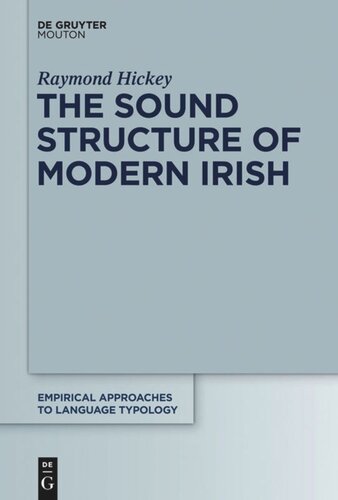

Most ebook files are in PDF format, so you can easily read them using various software such as Foxit Reader or directly on the Google Chrome browser.
Some ebook files are released by publishers in other formats such as .awz, .mobi, .epub, .fb2, etc. You may need to install specific software to read these formats on mobile/PC, such as Calibre.
Please read the tutorial at this link: https://ebookbell.com/faq
We offer FREE conversion to the popular formats you request; however, this may take some time. Therefore, right after payment, please email us, and we will try to provide the service as quickly as possible.
For some exceptional file formats or broken links (if any), please refrain from opening any disputes. Instead, email us first, and we will try to assist within a maximum of 6 hours.
EbookBell Team

4.8
54 reviewsThe Sound Structure of Modern Irish contains a comprehensive description of the phonology of Irish. Based on the main forms of the language, it offers an analysis of the segments and the processes in its sound system. Each section begins with a description of the area of phonology which is the subject - such as stress patterns, phonotactics, epenthesis or metathesis - and then proceeds to consider the special aspects of this subject from a theoretical and typological perspective.
The book pays particular attention to key processes in the sound system of modern Irish. The two most important of these are palatalisation and initial mutation, phenomena which are central to Irish and the analysis of which has consequences for general phonological theory.
The other main emphasis in the book is on a typological comparison of several different languages, all of which show palatalisation and/or initial mutation as part of their systems. The different forms of Celtic, Slavic languages, Romance dialects and languages along with languages such as Finnish, Fula, Nivkh and Southern Paiute are considered to find out how processes which are phonetic in origin (external sandhi) can become functionalised and integrated into the morphosyntactic system of a language.